7 Steps To Get Your Home Generator Ready
You lost power during the last storm. And the one before that.
You’re beyond ready to invest in a home backup generator.
Table of Contents
To get your home generator-ready, you’ll have to:
1. Find a Generac-Certified Installation Expert
When it comes to generators, Generac is the way to go.
They are the #1 best-selling brand of home backup generators for a reason.
Don’t go to Home Depot and take home the first generator you find.
Find a Generac-certified electrician you trust to guide you through the selection and installation process from start to finish.
Whole home generator installation is not a DIY project.
2. Review the Electrical System
Your home’s electrical system plays a crucial role in generator installation. (Shocker, I know).
Your electrician must connect the generator to your electrical panel, so you must have a well-maintained electrical system.
Before you start the Generac selection process, check with the technician to see if your electrical system is outdated or in need of repairs before the generator installation.
3. Choose the Right Home Backup Generator
Once your electrical system is ready, it’s time to choose the right home backup generator for your needs.
Your choice must depend on your home’s size, power requirements, and budget.
10kW generators are suitable for homes between 2,500 sq ft and 3,000 sq ft.
18kW generators are ideal for homes between 3,000 and 5,000 sq. ft.
24 kW generators are suitable for homes 5,000 sq. ft. and bigger.
Consult with your electrician to help you determine the best fit for your situation.
4. Choose a Warranty and Maintenance Plan
Whole home backup generator installation can be a significant investment of anywhere from $7,000 to $12,000, depending on your home’s size and power requirements.
To help ensure the greatest return on your investment, regular maintenance should be scheduled every 6 to 12 months or every 100 hours of run time, whichever comes first.
Talk to your trusted electrician about financing options, warranties, and maintenance plans.
5. Find the Optimal Location
The installation process typically involves anchoring them to a prefabricated concrete pad. Moving the generator after installation would be quite a hassle.
Avoid unnecessary heartache and work with your technician to choose the right place for your home.
It should be situated in a spot that is:
Easily accessible to the electrician for installation and maintenance (ideally, close the utility box).
Won’t send carbon monoxide exhaust into the home through an open window, door, or vent
Far enough away from bedrooms to avoid extra noise.
6. Schedule the Installation
Once you’ve hired a certified electrician and selected your Generac whole home backup generator, it’s finally time to schedule the installation.
Coordinate with your electrician to find a suitable date for the installation that works for both parties.
Be prepared for the installation process to take several hours to a full day, depending on if any electrical system updates are needed and the overall complexity of the job.
7. Clear the Installation Area
Before the electrician arrives, clear the installation area of any obstacles or clutter.
Remove any debris, gardening equipment, or vehicles that might hinder installation.
Never Let Your Home Go Dark Again!
Powerless, stormy nights are almost behind you for good.
Find a reputable local technician, like New London Electric, certified to install the best generators for your home with the best warranties for your peace of mind.
New London Electric offers an exclusive FREE 10-year warranty* with every Generac Whole Home Generator installation.
Request your free Generac Consultation and claim your 10-year Generac warranty*!
FAQs
WHAT DO I NEED TO KNOW BEFORE INSTALLING A GENERATOR?
Before getting a generator installed, you need to know the type of generator (we recommend Generac since they are #1 for whole home generators.) You also need to know what size generator you need and what fuel type (gas or propane) works best for your home.
For installation purposes, you need to know where you want the generator installed and who is going to install it (for a Generac generator, work with a Generac-certified dealer to preserve the warranty).
HOW DO I PREPARE MY HOUSE FOR A GENERATOR?
Prepare your house for a generator by…
Finding a certified installation expert
Reviewing the electrical system
Choosing the right home backup generator
Choosing a warranty and maintenance plan
Finding the optimal location
CAN YOU INSTALL A WHOLE HOUSE GENERATOR YOURSELF?
Generator installation is tricky, and it should always be done by an experienced professional. To install a standby generator, you must handle electrical wiring, plumbing, and potentially natural gas components, so it should never be a DIY job.
These contractors will ensure that there's a permit and will meet local or standard code requirements.
HOW MUCH DOES IT COST TO ADD A WHOLE HOUSE GENERATOR?
The average cost of a home standby generator is between $8,000 and $15,000, depending on the size and type.
If this exceeds your out-of-pocket budget, work with a dealer who offers financing options that fit your financial situation.
WHERE SHOULD A WHOLE HOUSE GENERATOR BE INSTALLED?
The installation process typically involves anchoring them to a prefabricated concrete pad. Moving the generator after installation would be quite a hassle.
It should be situated in a spot that is:
Easily accessible to the electrician for installation and maintenance (ideally, close the utility box).
Won’t send carbon monoxide exhaust into the home through an open window, door, or vent
Far enough away from bedrooms to avoid extra noise.





